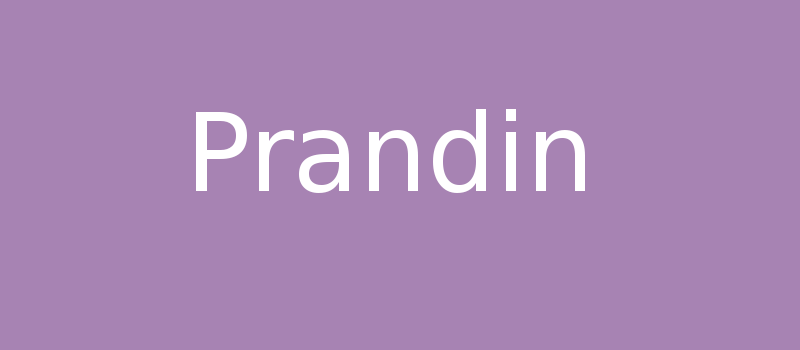How Prandin Could Affect Your Life Insurance Rates

With a disease as complex as diabetes, there are a wide variety of medications that patients may take to help control the disease. It’s common for diabetes patients to take multiple medications, each with a distinct purpose. One medication that may be used to help treat diabetes is Prandin.
Prandin Defined
Prandin is an oral medication designed to lower glucose levels in the treatment of type 2 diabetes. It is also known by the generic name Repaglinide. The drug helps to initiate the release of insulin from the pancreas, resulting in lower blood glucose levels. Therefore, it works to lower blood sugar in diabetes patients who experience high blood sugar, also known as hyperglycemia.
After being ingested, Prandin is fast acting and will be quickly absorbed by the body. Effects of the drug can be felt within an hour, which is why Prandin has become closely associated with the intake of food.
Why Is This Prescribed?
Prandin is prescribed to patients suffering from type 2 diabetes. It helps to manage blood sugar levels by initiating the release of insulin, which in turn, helps to lower blood sugar. The body naturally produces insulin, which helps the body utilize the sugar that is consumed with food. Without insulin functioning properly, blood sugar levels can be difficult to control.
Patients are advised to take Prandin between 15 and 30 minutes prior to eating a meal. Taking it immediately before a meal is possible, but it’s best to take Prandin roughly 15 minutes before eating. The number of daily doses of Prandin will depend on the number of meals consumed in a day, although two to four doses each day are most common.
By taking Prandin prior to a meal, the drug helps to jumpstart the production and release of insulin in the pancreas. The insulin created by the dose of Prandin helps the body handle the intake of sugar during the meal. Thus, blood sugar levels can remain at normal levels during the meal.
Without a dose of Prandin prior to a meal, a diabetes patient may experience blood sugar levels that are too high and unhealthy following the meal. The insulin produced by the Prandin mimics what would occur as someone without diabetes begins to eat. Thus, Prandin has become closely linked with meals for people with type 2 diabetes.
Of course, Prandin is just one method for those with type 2 diabetes to regular their blood sugar. The drug is often prescribed as part of a larger treatment plan that includes proper diet and exercise. Nor following the prescribed regimen of diet and exercise can alter the effect of Prandin with regard to regulating blood sugar levels.
What Symptoms Does Prandin Treat?
The primary function of Prandin is to prevent hyperglycemia following meals in type 2 diabetes patients. Taking it during the proper times and in conjunction with proper diet, exercise, and other medications that have been prescribed should reduce common symptoms of high blood sugar, including:
- Increased thirst
- Frequent urination
- Dry mouth
- Hunger
- Drowsiness
- Fruity breath
- Blurred vision
Of course, type 2 diabetes that is not controlled properly can lead to more serious long-term consequences. Among these are:
- Kidney damage
- Nerve issues, including loss of sensation in extremities
- Increased risk of cardiac events like heart attack or stroke
- Loss of limbs
If Prandin is taken regularly but symptoms of hyperglycemia persist or blood sugar levels are not within normal range, it’s important to discuss the problem with a medical professional. Changes in your diet, exercise routine, or your dose of Prandin may be necessary to resolve the issue and better manage the symptoms of type 2 diabetes.
Potential Risks
It’s important to recognize that Prandin is not a viable medication for everyone. It’s strictly a medication for type 2 diabetes, not type 1. It should also not be taken by anybody with a serious liver or kidney ailment. There are also several medications, including some types of insulin, that can prevent patients from taking Prandin or require a lower dose of the drug.
Even people not taking other medications that conflict with Prandin may experience side effects of the drug. The most notable risk is blood sugar that’s too low, also known as hypoglycemia. Since Prandin is designed to lower blood sugar, it’s possible that it becomes too low, leading to symptoms that include:
- Hunger weakness
- Headaches and trouble concentrating
- Sweating
- Irritability
- Tremors
An allergic reaction to Prandin is rare but possible. Signs of an allergic reaction require immediate medical intervention and may include:
- Difficulty breathing
- Swelling of face, throat, lips, or tongue
- Hives
Aside from an allergic reaction, there are other side effects to Prandin that are rare but potentially serious. Experiencing seizures or unconsciousness are possible and should result in immediate consultation with a medical professional. More moderate side effects of Prandin should also be brought to the attention of a medical professional and include:
- Chest pain
- Shortness of breath
- Fever
- Coughing and sneezing
- Sinus pain
- Sore throat
While it’s not uncommon to experience side effects of Prandin or any other drug, it’s important to mention any side effects to your doctor. This is particularly true if they are indicative of issues commonly associated with diabetes or symptomatic of problems with blood sugar levels.
